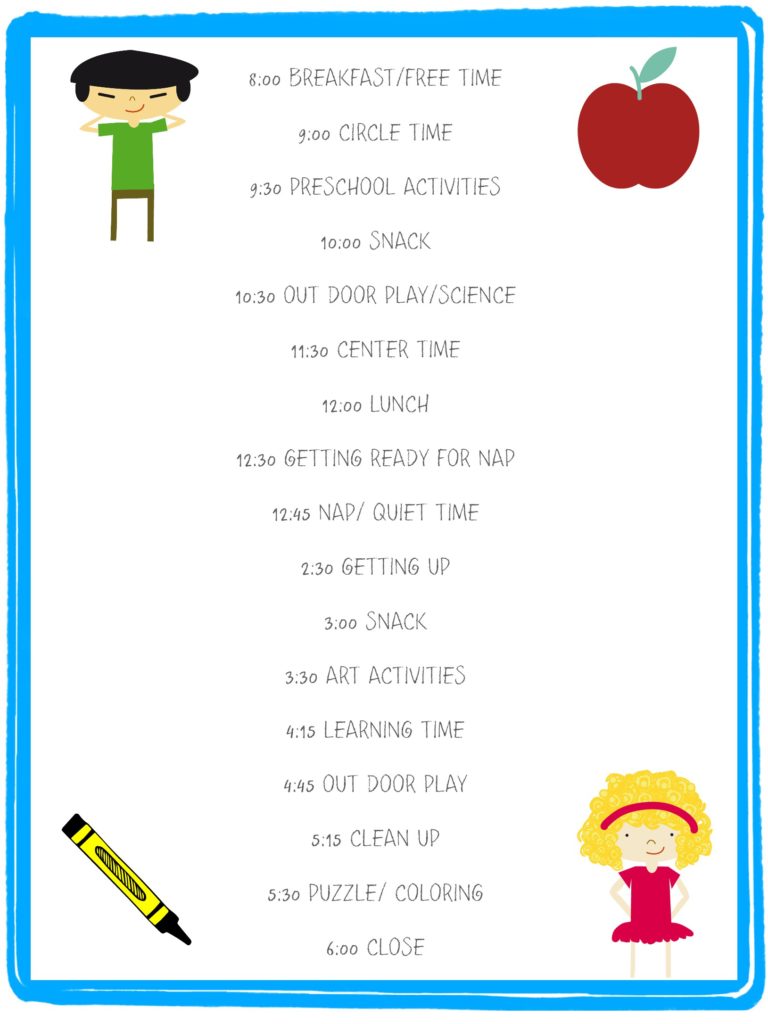Many parents dread that first drop-off with a new caretaker. Whether you’re just returning from a maternity leave, or your child is entering care for the first time at the pre-k level, there are a number of simple tips we can share to ease the transition for your child.
First Visits
Before the first official day it’s best to acquaint your child with the new caregiver and their new surroundings. In these initial sessions, try to take a backseat and allow your child to interact with their surroundings along with the caregiver and any other children in care. Depending on your child’s age, temperament and personality this may look wildly different, but you can ease the transition for all kids by conveying reassurance and excitement regarding the new surroundings. Ms. Kim, formerly a director of the Goddard School in Kirkland, Washington, recommends parents observe their children from the edges of the room (or through a window/doorway), so your child will not associate your presence with the new surroundings. Some kids will need easing in and reassurance, others will jump in and play without noticing your absence. These are all normal reactions and your child may come to surprise you with theirs!
Building Consistency and Routine
Consistency and routine are two of the most important tools in an early childhood educator’s toolbox. Routines work well for little people to learn simple steps in a group activity (wash hands, sit down, eat snack) as well to build rhythms in their day: snacks served at the same time, outdoor play preceding meals and nap times following physical activity – these routines are the building blocks of a successful transition. More than likely your own set routine will vary from that of your day care but you can still work to create consistency between the two it will help ease the transition for your child. Aim to serve meals and snacks around the same time on weekends and off days, and work in mini-routines used by your caregiver in your daily life, even if it’s as simple as washing hands or hanging their own jacket up.
To make your own transition smoother build smart routines to get your child out the door in time. You can create a visual checklist or just recite short routines for your child to participate in, such as “Grab your bag, put on your shoes and go out the door!” Creating a sense of both excitement and personal responsibility in the “I want to do it myself” stage can motivate your little one to enjoy each little routine you build together.
Dealing with Tears and Separation Anxiety
So what to do when that first day comes and the tears start to flow? Trust in your caregivers and child to work it out. Children are remarkably resilient and adaptable creatures, and many a dramatic set of tears has been wiped away by just the right toy, a bird in the sky, a comforting word. Often this day is more heart-wrenching for mothers than their children, who get swept up by a new favorite activity, a new little friend, or an attachment to the caregiver. Often a prolonged goodbye is harder than a quick and graceful exit. Tears may flow the hardest and fastest while mom and dad are right in front of them, but most children will allow themselves to be comforted as you depart.
Experts say these transition periods can last up to six weeks, and if your child is in a stage of extreme separation anxiety you may need all this time to adjust. A picture of your child playing happily moments after a tearful departure is an excellent reassurance for every parent who struggles with the initial drop offs, as is picking up a smiling kid at the end of the day. These moments will build until your child realizes each day is an opportunity to play and learn, rather than just a period of separation.



Leave a Reply